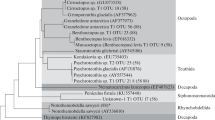Abstract.
Towards the end of the 17th century, Leeuwenhoek built "magnifying glasses" that enabled him to see and describe protozoa for the first time. Continued exploration of the natural history of protozoa during the past 300 years has progressed far beyond simply documenting morphospecies (global total probably <20,000). We now realize that protozoan 'biodiversity' is multi-faceted (e.g. sibling species, variant genotypes and syntrophic consortia). Realization of their extraordinary abundance has secured for protozoa the position of dominant phagotrophs and regenerators of nutrients within microbial food webs. And studies of protozoa in the natural environment have done much to effect a paradigm shift in our understanding of why specific microbes live where they do and how they got there in the first place. In particular, the hypothesis of ubiquitous dispersal of protozoan species does seem to be supported by the evidence provided by morphospecies, sibling species and even individual genotypes.
Similar content being viewed by others
Author information
Authors and Affiliations
Additional information
Electronic Publication
Rights and permissions
About this article
Cite this article
Finlay, B.J., Esteban, G.F. Exploring Leeuwenhoek's legacy: the abundance and diversity of protozoa. Int Microbiol 4, 125–133 (2001). https://doi.org/10.1007/s10123-001-0027-y
Received:
Accepted:
Issue Date:
DOI: https://doi.org/10.1007/s10123-001-0027-y




